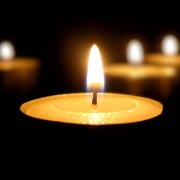Julia Child had a recipe for teaching Americans to make classy food: combine the art of a master chef with chirpy humor and the occasional gourmet pratfall. And don't forget the wine.
For generations of Americans, she was a 6-foot-2 kitchen icon, sharing her delight of French cuisine through her TV show and cookbooks. Her warbling voice and cheery manner merited endless parodies but her contribution to U.S. gastronomy was undeniable.
"At a time when we were all eating canned food and frozen TV dinners, she came out and said, 'You should be eating better than this and go back in the kitchen and start cooking,''' said longtime friend Sara Moulton, a cook who hosts "Sara's Secrets'' on the Food Network.
Child died early Friday at her home in an assisted-living center in Montecito, about 90 miles northwest of Los Angeles, said her niece, Philadelphia Cousins.
Child, who had suffered from liver failure, died in her sleep two days before her 92nd birthday, her niece said.
Family, friends and her kitten, Minou, were at her side, Cousins said.
She was a "great, great figure of the art of cooking'' said top French chef Alain Ducasse, who knew Child.
"Her enthusiasm for cooking was endless. Ms. Child was an inspired ambassador of cuisine in the United States,'' Ducasse said in a statement. "Today, the entire community of cooks is sad and feels like orphans.''
Child was 51 when she made her television debut as "The French Chef.'' The series began in 1963 and continued for 206 episodes. Child won a Peabody award in 1965 and an Emmy the following year. She went on to star in several more series for Boston's WGBH-TV.
"She was incredibly smart, and if she wanted to learn something, she set about learning it,'' said Russell Morash, who produced "The French Chef'' and other public television shows featuring Child as recently as the mid-1990s.
"Whether it was how to make French bread, or how to prepare the perfect omelet, she would take the trouble to learn about something, and then she mastered it in a way that I never saw anyone else do,'' Morash said.
Her gourmet philosophy included drinking. In one TV program, chef and friend Jacques Pepin asked what kind of wine she preferred with picnics -- red or white.
"I like beer,'' Child said enthusiastically, pulling out a cold bottle and two glasses.
"We'd go to the market, and she'd buy Wonder Bread,'' Pepin said in a telephone interview. "She had no snobbism about food whatsoever.''
Child also expressed a fondness for hamburgers, which she ate while recovering from 2002 knee-replacement surgery.
She wasn't always tidy in the kitchen, and just like the rest of us, sometimes dropped things or had trouble getting a cake out of its mold.
"If she made a mistake on TV she would keep going,'' Moulton said. "Here was this 6-foot-2 woman with a warbly voice dropping the meat on the burner and saying 'No big deal.' So why should I be nervous about cooking? Her real legacy is she got us cooking.''
Last year, President Bush awarded Child the Presidential Medal of Freedom, the nation's highest civilian honor.
Her custom-designed kitchen -- including small utensils, personal cookbooks and six-burner Garland commercial range -- has been on display at the Smithsonian's National Museum of American History.
"She was more than a pioneer, a legend or a giant. She's the rock that started the avalanche that changed the way America eats,'' said Brooke Johnson, president of the Food Network, which will air a documentary on Child Aug. 22.
Child was born in Pasadena, Calif., and graduated from Smith College in 1934 with a history degree.
When World War II began, she joined the Office of Strategic Services, forerunner of the CIA. She was sent off to do clerical chores in Ceylon (now Sri Lanka), where she met Paul Child, a career diplomat who later became a photographer and painter.
They married in 1946 and two years later were sent to Paris.
In France, she enrolled in the famed Cordon Bleu cooking school and also met Simone Beck and Louisette Bertholle, with whom she collaborated on "Mastering the Art of French Cooking.'' The book was nine years in the making and became mandatory for anyone who took cooking seriously.
It was published in 1961 and was followed by "The French Chef Cookbook''; "Mastering the Art of French Cooking, Vol. II,'' with Beck; "From Julia Child's Kitchen''; "Julia Child & Company''; "Julia Child & More Company''; and "The Way to Cook,'' in October 1989.
More recently, she teamed with fellow television chef Jacques Pepin for the 1994 PBS special, "Julia Child & Jacques Pepin: Cooking in Concert'' and a 1996 sequel, "More Cooking in Concert.''
Child also had been collaborating on a memoir with a grandnephew, Alex Prud'homme, and had completed two chapters, said her longtime editor at Knopf, Judith Jones. Work on the memoir likely will continue and it is expected to be published.
Child's husband died in 1994. A longtime resident of Cambridge, Mass., she moved to Santa Barbara in late 2001. The couple had no children.
A private memorial service was planned, but Child asked that no funeral be held.







